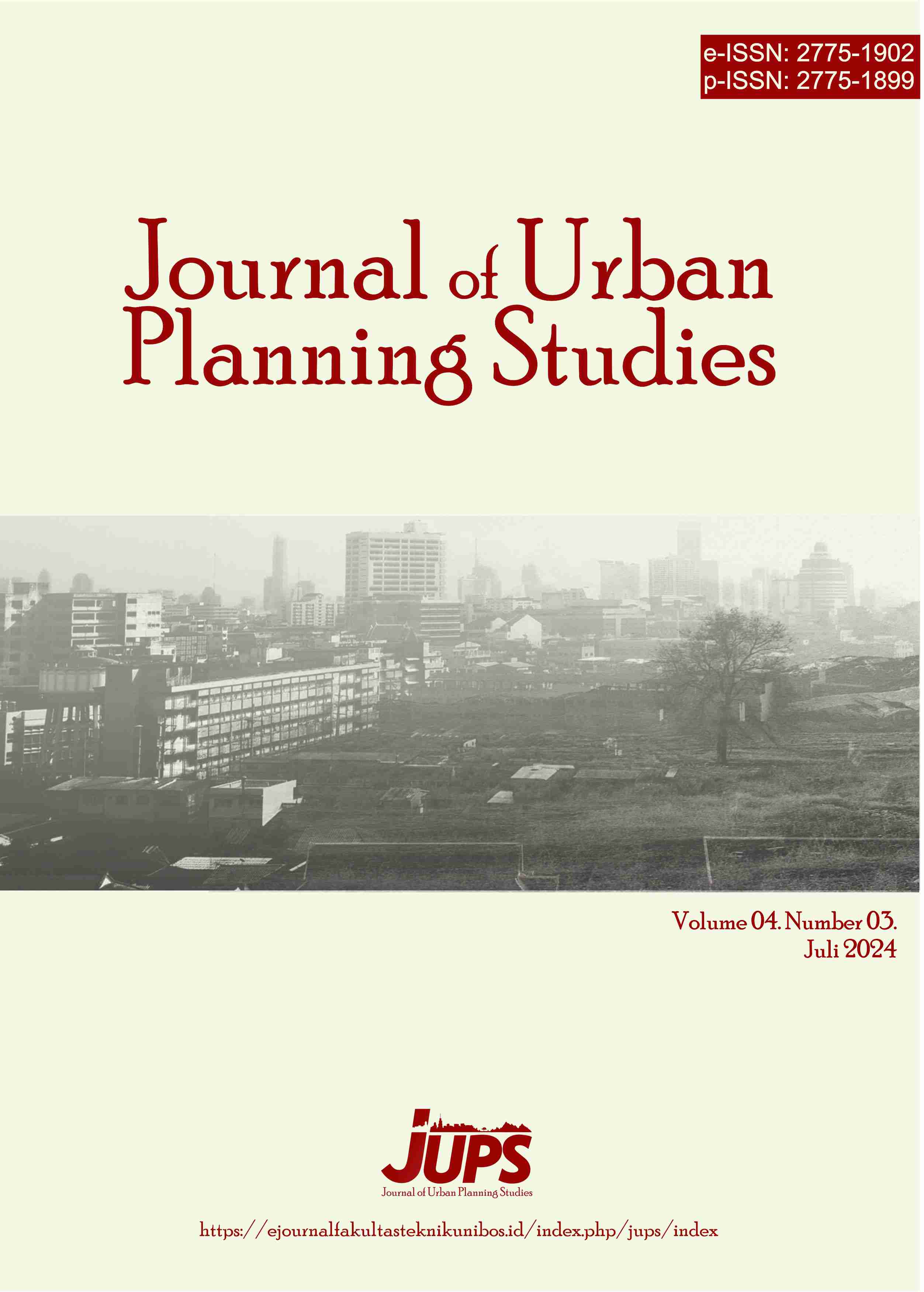Pemetaan Kawasan Rawan Bencana Banjir dan Penentuan Jalur Evakuasi dengan Metode Network Analysis di Kecamatan Sangatta Utara
DOI:
https://doi.org/10.35965/jups.v4i3.619Keywords:
Rawan banjir, evakuasi, jalur, Network AnalysisAbstract
This study aims to map the flood evacuation route in North Sangatta District. Several analyzes were used in this study to achieve the objectives to be achieved, first of all analyzing the level of vulnerability to floods in North Sangatta District by using the overlay method. In determining the route used network analyst method. Based on the results of the analysis that has been done, it is found that the level of vulnerability to flooding is divided into three, namely low, medium and high. Evacuation routes obtained 22 evacuation route directions with 9 evacuation location points.
References
Cooper, C. H. V., & Chiaradia, A. J. F. (2020). sDNA: 3-d spatial network analysis for GIS, CAD, Command Line & Python. SoftwareX, 12, 100525. https://doi.org/10.1016/j.softx.2020.100525
Hidayat, A. (2012). Analisis Pengembangan Kawasan Pesisir Berbasis Mitigasi Sea Level Rise (Kenaikan Muka Air Laut) Studi Kasus Kawasan Kota Lama Makassar. Jurnal Lingkungan Binaan Indonesia, 1(2012), 14.
Irsyad, H. A. W., & Hitoshi, N. (2022). Flood disaster evacuation route choice in Indonesian urban riverbank kampong: Exploring the role of individual characteristics, path risk elements, and path network configuration. International Journal of Disaster Risk Reduction, 81, 103275. https://doi.org/10.1016/j.ijdrr.2022.103275
Makalew, F. P., & Mandang, D. J. F. (2020). Design principle of evacuation route for the pedestrian during a flood event in Borgo village. IOP Conference Series: Earth and Environmental Science, 419(1), 012091. https://doi.org/10.1088/1755-1315/419/1/012091
Parajuli, G., Neupane, S., Kunwar, S., Adhikari, R., & Acharya, T. D. (2023). A GIS-Based Evacuation Route Planning in Flood-Susceptible Area of Siraha Municipality, Nepal. ISPRS International Journal of Geo-Information, 12(7), 286. https://doi.org/10.3390/ijgi12070286
Safizadeh, M., Hedayati Marzbali, M., Abdullah, A., & Maliki, N. Z. (2022). Proposed flood evacuation routes for heritage areas based on spatial configuration analysis: a case study of Penang, Malaysia. Journal of Facilities Management. https://doi.org/10.1108/JFM-11-2021-0137
Silalahi, F. E. S., Hidayat, F., Dewi, R. S., Purwono, N., & Oktaviani, N. (2020). GIS-based approaches on the accessibility of referral hospital using network analysis and the spatial distribution model of the spreading case of COVID-19 in Jakarta, Indonesia. BMC Health Services Research, 20(1), 1053. https://doi.org/10.1186/s12913-020-05896-x
Trenggana, S. (2018). Spatial Modeling of Cold Lava Flood Evacuation in Kali Putih, Magelang Regency, Using Network Analyst. International Journal of Environment, Agriculture and Biotechnology, 3(4), 1499–1517. https://doi.org/10.22161/ijeab/3.4.48
Wagistina, S., Syafitri, D. R., Lestari, J. S., Amanatinismi, K. H., Setiawan, D., & Ramadhani, S. (2022). Service Area Network Analysis for Location Planning of Microbusiness and Local Franchise in Urban Area: A Case Study in Malang City, East Java Provence, Indonesia. Economies, 10(5), 103. https://doi.org/10.3390/economies10050103
Downloads
Published
How to Cite
Issue
Section
License
Copyright (c) 2024 Al Aswad Janfari, Arief Hidayat, Rahmi Yorika, Umar Mustofa

This work is licensed under a Creative Commons Attribution 4.0 International License.













